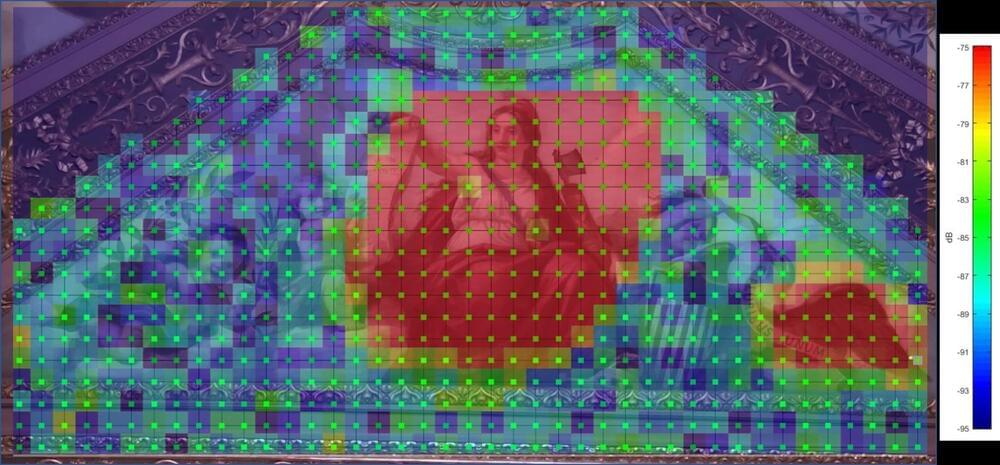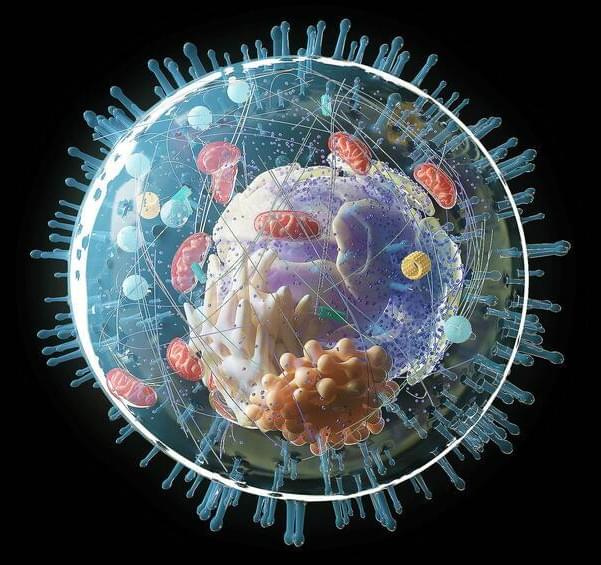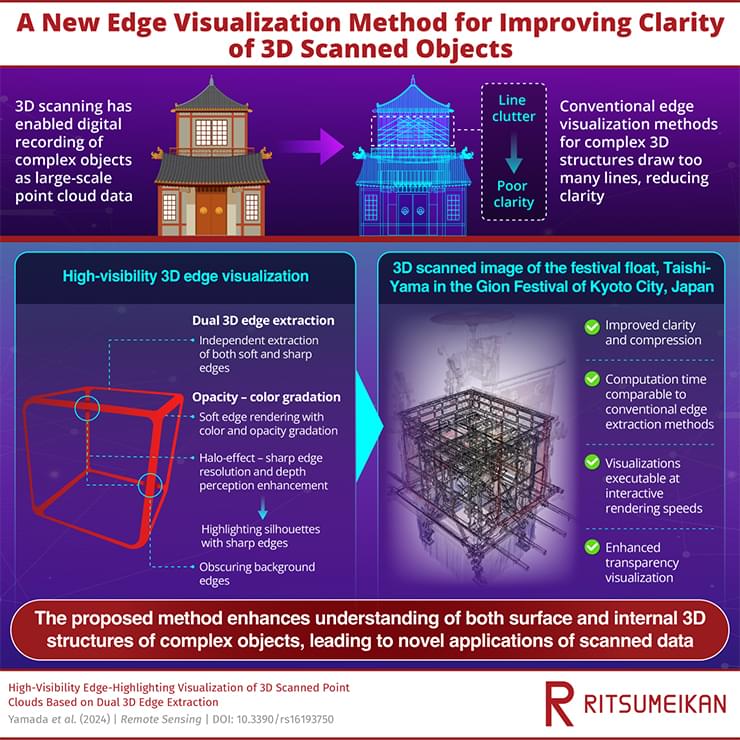The more exciting, transformative, and revolutionary a science result appears, especially coming out of nowhere, the more likely it is to be dead wrong. So, approach science headlines with a healthy amount of skepticism and patience.
By Paul Sutter

The more exciting, transformative, and revolutionary a science result appears, especially coming out of nowhere, the more likely it is to be dead wrong. So, approach science headlines with a healthy amount of skepticism and patience.
By Paul Sutter

KAIST researchers have developed a groundbreaking single-atom editing technology using light-powered “molecular scissors” to convert oxygen atoms into nitrogen in drug compounds, simplifying drug development and boosting efficacy.
In the field of pioneering drug development, a groundbreaking new technology that enables the precise and rapid editing of key atoms critical to drug efficacy has been hailed as a transformative and “dream” innovation, revolutionizing the process of discovering potential drug candidates. Researchers at KAIST have achieved a world-first by successfully developing single-atom editing technology designed to maximize drug efficacy.
On October 8th, KAIST (represented by President Kwang-Hyung Lee) announced that Professor Yoonsu Park’s research team from the Department of Chemistry successfully developed technology that enables the easy editing and correction of oxygen atoms in furan compounds into nitrogen atoms, directly converting them into pyrrole frameworks, which are widely used in pharmaceuticals.
Dysolve, the first artificial intelligence-powered platform for dissolving dyslexia and associated learning disabilities, is paving the way for a new treatment approach.
Dyslexia is a neurodevelopmental learning disorder that makes it challenging for children and adults to read, write, and spell. The condition affects one out of every five people and represents 80% to 90% of those with learning disabilities.
This condition once seemed permanent. The new Dysolve AI program can correct dyslexia, a task beyond even the most qualified of human specialists, according to Coral Pau-San Hoh, Dysolve’s CEO and co-founder of the AI platform that generates interactive verbal games customized to evaluate each student.
OpenScholar, an innovative AI system by Allen Institute for AI and University of Washington, revolutionizes scientific research by processing 45 million papers instantly, offering researchers citation-backed answers and challenging proprietary AI systems.

Fresco painting, a technique that dates back to antiquity, involves applying dry pigments to wet plaster, creating stunning artwork that can last for centuries. Over time, however, these masterpieces often face degradation due to delamination, where decorative plaster layers separate from the underlying masonry or structural plaster. This deterioration can compromise the structural integrity of the artwork, necessitating restoration efforts.
Historically, conservators have gently knocked on the plaster with their knuckles or small mallets to assess the condition of the fresco. By listening to the emitted sound, they could identify the delaminated areas needing repair. While effective, this technique is limited both by the conservator’s experience and the small number of people in the world who possess these skills.
Recent research by Joseph Vignola at the Catholic University of America is revolutionizing fresco assessment. Vignola and his team have applied laser Doppler vibrometry to locate delamination in the frescos of Constantino Brumidi in the U.S. Capitol building. This innovative method uses a laser to measure the vibration of a surface, enabling the team to detect delaminated areas based on their unique vibrational characteristics.

For a very long time, we have been under the impression that memory and learning are solely the brain’s forte. Central to this belief is the fact that our brains, particularly our brain cells, store memories.
However, an innovative team of researchers begs to differ, suggesting that cells in other parts of the body partake in this memory function too.
The ability of non-brain cells to learn and form memories is a riveting discovery.

GE Research has proposed transformational material solutions to potentially enable a gas turbine blade alloy-coating system capable of operating at a turbine inlet temperature of 1800 °C for more than 30,000 hours. GE aims to develop a niobium (Nb)-based alloy that can operate at 1,300 °C (2372 °F), coating system consisting of a novel oxidation resistant bond coat compatible with the new Nb-based alloy, and thermal barrier coating for improved durability that can operate at 1700 °C (3092 °F) and a scalable manufacturing process for producing internally cooled gas turbine blades with the new alloy. Application of the new technologies to existing combined cycle gas turbines in the U.S. could increase the thermal efficiency by approximately 7%.
The latest AI News. Learn about LLMs, Gen AI and get ready for the rollout of AGI. Wes Roth covers the latest happenings in the world of OpenAI, Google, Anthropic, NVIDIA and Open Source AI.
My Links 🔗
➡️ Subscribe: / @wesroth.
➡️ Twitter: https://twitter.com/WesRothMoney.
➡️ AI Newsletter: https://natural20.beehiiv.com/subscribe.
#ai #openai #llm.
The original interview: • how to build the future: sam altman

Researchers develop a novel edge-highlighting visualization technique for more comprehensible 3D-scanned objects. Improvements in three-dimensional (3D) scanning have enabled quick and accurate scanning of 3D objects, including cultural heritage objects, as 3D point cloud data. However, conventional edge-highlighting visualization techniques, used for understanding complex 3D structures, result in excessive line clutter, reducing clarity. Addressing these issues, a multinational team of researchers have developed a novel technique, involving independent rendering of soft and sharp edges in 3D structures, resulting in improved clarity and depth perception.
Recent advances in three-dimensional (3D) scanning, particularly in photogrammetry and laser scanning, have made it possible to quickly and accurately scan complex 3D objects in the real world. These techniques generate detailed models by collecting large-scale point cloud data, representing the object’s surface geometry through millions of individual points. This technology has applications in different fields, such as the 3D scanning of cultural heritage objects. By preserving these objects in digital formats, researchers can analyze their structures in greater depth. However, the complexity of data is often significant, especially when the scanned object has internal 3D structures, like rough edges.
Edge-highlighting visualization is a technique used to improve the clarity of complex 3D structures by emphasizing the object’s edges, making its shape and structure more distinguishable. However, existing methods struggle when applied to highly complex objects. These methods draw too many lines, which decreases clarity by impairing resolution and depth perception.